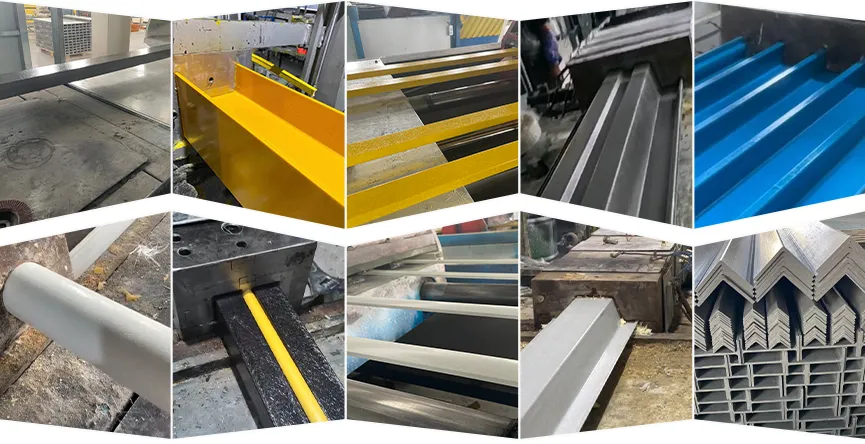loading...
- No. 9, Xingyuan South Street, Dongwaihuan Road, Zaoqiang County, Hengshui, Hebei, China
- admin@zjcomposites.com
- +86 15097380338
- Welcome to visit our website!
Designing Efficient Square Water Storage Tanks for Optimal Space Utilization and Durability
The Importance of Square Water Storage Tanks
Water storage is a critical component of modern infrastructure, playing a vital role in agricultural, industrial, and residential applications. Among the various designs available for water storage, square water storage tanks have gained popularity due to their unique advantages and practical applications.
Design and Structure
Square water storage tanks, as the name suggests, are designed in a square shape. This geometric form offers several benefits over traditional cylindrical tanks. One of the primary advantages of a square tank is its efficient use of space. The corners of the square design allow for better utilization of available land, making them ideal for locations where space is limited. Additionally, square tanks can be positioned alongside buildings or in corners of properties without wasting valuable square footage.
Moreover, square tanks can be constructed using various materials, including plastic, steel, and concrete. Each material has its advantages, allowing for customization based on the specific needs and environmental conditions of the installation site. For instance, plastic square tanks are lightweight and resistant to corrosion, while concrete tanks provide excellent durability and can handle larger volumes of water.
Capacity and Versatility
Another significant advantage of square water storage tanks is their capacity. They can easily be built in various sizes, accommodating the needs of residential homes, industrial plants, or agricultural operations. This versatility makes square tanks suitable for different water storage requirements, whether for drinking water, irrigation, or industrial processes.
In addition, square tanks can often be connected to form larger storage systems, allowing for scalable solutions that can grow with increasing demand
. This modularity is particularly beneficial for agricultural applications where water demands can fluctuate seasonally.square water storage tank

Maintenance and Accessibility
Maintaining square water storage tanks can be more straightforward than cylindrical tanks due to their design. The flat surfaces of square tanks enable easier access for inspections and cleaning. Users can easily reach each corner of the tank, ensuring that maintenance procedures are thorough and efficient. Regular maintenance is essential to prevent algae buildup and to ensure the water remains clean and potable.
Furthermore, square tanks can often be equipped with modern technology such as sensors and automated monitoring systems. These systems help track water levels, purity, and other critical metrics, providing peace of mind for users by ensuring that water quality and availability are consistently managed.
Environmental Considerations
As sustainability becomes increasingly important, square water storage tanks offer eco-friendly options. Many manufacturers produce tanks using recycled materials or create designs that incorporate eco-efficient practices. For instance, certain plastic tanks are made from high-density polyethylene (HDPE), which is both durable and recyclable. This aligns with the growing trend towards sustainable infrastructure development.
In addition, because square tanks can hold a large volume of water, they can be used to collect and store rainwater. This rainwater harvesting practice not only conserves water but also reduces the pressure on municipal water systems, contributing to a more sustainable water management strategy.
Conclusion
In conclusion, square water storage tanks represent an innovative and efficient solution for a variety of water storage needs. Their unique design, versatile capacity, ease of maintenance, and potential for sustainability make them a preferred choice among consumers and industries alike. As water scarcity continues to challenge communities worldwide, the role of effective and efficient water storage solutions, like square tanks, will only become more critical in ensuring a reliable and sustainable water supply.
-
GRP Structures: The Future of Lightweight, High-Performance EngineeringNewsJun.20,2025
-
FRP Water Tank: High-Performance Storage for Corrosive and Clean Water SystemsNewsJun.20,2025
-
FRP Square Tube: The New Industry Standard for Chemical and Structural ApplicationsNewsJun.20,2025
-
FRP Pultruded Profiles: The Ultimate Choice for Lightweight Structural StrengthNewsJun.20,2025
-
FRP Handrails: The Safer, Smarter, and Stronger Choice for Modern InfrastructureNewsJun.20,2025
-
FRP Grating: The Smart Solution for Durable, Lightweight Industrial FlooringNewsJun.20,2025
-
Why Choose a Galvanized Water Tank for Your Storage NeedsNewsMay.21,2025
